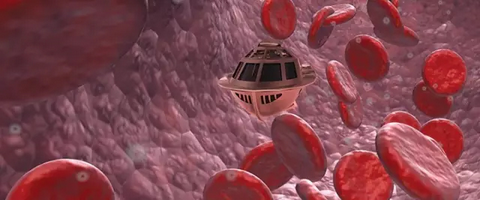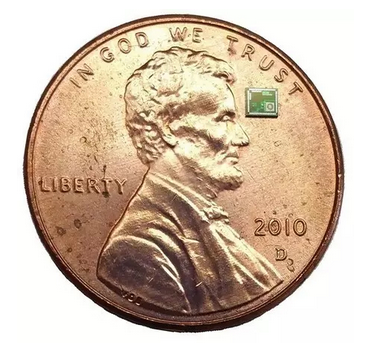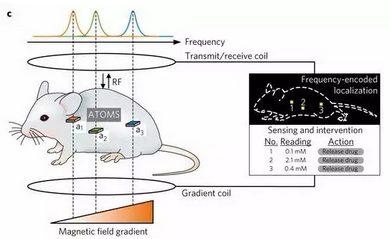Science fiction is the best prediction for the future. Hundreds of years ago, human beings imagined in science fiction stories that one day we can dive into the deep sea and fly into space. These fantasies have come true, but the journey of mankind to turn science fiction into reality has only just begun. In this “belonging to biology†century, more and more scientific fantasy methods on health are becoming new products for the benefit of mankind.

In 1966, a movie named "Fantastic Voyage" was released in the United States. This movie tells the story of five doctors being reduced to one in one million, and then taking a submarine into the body along the blood stream to treat inside the patient's body. Today, 50 years later, we have seen its embryonic form.
This week, two scientists at Caltech have developed a brand new “tablet†that solves one of the biggest challenges in turning science fiction into reality—positioning. Previously, people had developed a lot of micro-robots, trying to diagnose or treat in the human body. However, these robots cannot be precisely positioned. The body's tissue is too thick. Whether using electromagnetic fields, sound waves, or image-based methods, it is difficult to find the location of these miniature robots in the body. As a result, the role of these robots is very limited. If you can't tell if the signal of the lesion comes from the small intestine or the large intestine, what is the significance of such a diagnosis?

People want to know the location of micro-robots in the human body (Source: "Nature Biomedical Engineering")
Two Caltech scientists found a potential solution at the table. At one party, Dr. Mikhail Shapiro, who is well versed in medical imaging technology, and Dr. Azita Emami, a microchip co-author, came up with a new idea. In ordinary medical imaging, magnetic resonance imaging (MRI) can penetrate the thick human body, allowing doctors to see the patient's body structure. Can we apply this technology to microchips?

Dr. Mikhail Shapiro was selected by the Massachusetts Institute of Technology Review as “Innovator under 35†(Source: MIT Technology Review)
“A key principle of MRI is that the gradient of the magnetic field allows atoms of different parts of the body to resonate at different frequencies, so we can easily know where these atoms belong,†said Dr. Shapiro: “We want to integrate this elegant principle into In circuit, our ATOMS chip can also resonate at different frequencies under different magnetic fields."

This microchip is much smaller than a coin (Source: Caltech)
The ATOMS chip that Dr. Shapiro mentioned is the “treatment submarine†they developed. It is only one-half of a coin. Under certain magnetic field gradients, they can also resonate at different frequencies, allowing the location of these small chips to be analyzed. This opened the way to the future.
With precise positioning, these small chips can do many previously unimaginable tasks. With the combination of diagnostic tools, they can analyze critical data such as blood glucose concentration, temperature, and inflammatory molecular levels in specific parts of the body to help doctors determine the condition; after the combination of drugs, they can also traverse a number of obstacles and release in specific places. drug. For example, we can release drugs that kill tumors in the vicinity of tumors, on the one hand, to minimize the effects of drugs on normal cells, and on the other hand, to increase the concentration of the drug in the vicinity of the tumor and improve the effect.

Mouse experiments confirm its effectiveness (Source: "Nature Biomedical Engineering")
These small chips have demonstrated its effectiveness in mice. Researchers expect it to enter human trials as soon as possible. In the future, with the help of these chips, doctors can diagnose patients more accurately, and they can also allow patients to use drugs more precisely. As the California Institute of Technology said, this is what the "future drug" should have!
Reference materials
[1] Medicine of the Future: New Microchip Technology Could Be Used to Track Smart Pills
[2] Localization of microscale devices in vivo using addressable transmitters operated as magnetic spins
Greeting cards with led lights
Flashing Music Greeting Card, Music Valentine's Day Card, Greeting Card Flashing Led Module
AST Industry Co.,LTD , https://www.astsoundchip.com